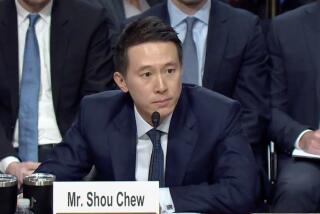The FTC, Twitter and the nanny state
The Federal Trade Commission revised its guidelines for digital advertisers Tuesday, clarifying what the agency expects by way of disclosures on Twitter and in texts.
In a nutshell, it said that even brief marketing messages have to make “clear and conspicuous” any disclosures that are necessary to prevent consumers from being misled.
As the agency put it in a news release, “consumer protection laws apply equally to marketers across all mediums, whether delivered on a desktop computer, a mobile device, or more traditional media such as television, radio, or print.”
The disclosure requirement drew catcalls from Business Insider’s Henry Blodgett, who wrote: “The clucking nannies at the Federal Trade Commission (FTC) have ruled that Tweets must contain ‘the fine print.’ ... The regulators defended this absurdity by saying that some befuddled consumers might go straight from Twitter to the store and therefore might not learn that they had just been brainwashed.”
One example that Blodgett cites is the disclosures in radio and television ads for Viagra, which warn about the drug’s potential side effects. “If you’ve ever listened to a radio ad or seen the Viagra-spot warnings about erections lasting more than six hours, you’ll know that the fine print usually takes up more than 140 characters,” he wrote.
I usually bristle at the federal government’s efforts to protect me from my laziness or willful ignorance. But in the case of pharmaceuticals, I say the feds can’t be nanny-state enough.
There’s an enormous problem of “information asymmetry” when it comes to the healthcare market; sellers know far more about the services and products they offer than buyers can be expected to learn. When drug makers run ads touting the magical powers of their pills, it’s hardly too much to ask to require them to give consumers a summary of the possible downsides.
More important, the principal at work here is that the law and its enforcers treat cyberspace and wireless networks the same as any other venue when it comes to consumer protections. If someone pays a celebrity to tweet that Chewy Coco Crumbles taste great and are great for you, the people who follow said celebrity should be able to tell right away that the tweet was sponsored.
Sure, it may be easy to tell in many cases when a product shout-out isn’t a sincere and spontaneous profession of product love, but some Twitter streams read like a roll call of brand names.
And thanks to apps such as Roamz that compile tweets, Twitter is becoming a crowd-sourced platform for reviews a la Yelp. In that context, it really helps to know when a tweet reflects someone’s actual experience at a restaurant or store, as opposed to a glowing endorsement that had been bought and paid for.
It’s also true that the free flow of information online makes it hard to sustain a fraud. Yet that doesn’t mean that the Internet should be an anything-goes zone for pitchmen.
As Blodgett and the Wall Street Journal noted, political ads on Twitter carry a purple mark, and they display the required disclosures about their funding source in a separate field when a reader’s cursor passes over the tweet.
One can only imagine how big that field would have to be to report all of a drug’s possible side effects. Still, consumers are entitled to that information. If marketers don’t want to make those disclosures on Twitter or in text messages, they can find other ways to make their pitch.
ALSO:
Judge stops NYC soda ban, but don’t celebrate
Please, Los Angeles, don’t buy what Alaska is giving away
twitter.com/@jcahealey
More to Read
A cure for the common opinion
Get thought-provoking perspectives with our weekly newsletter.
You may occasionally receive promotional content from the Los Angeles Times.







